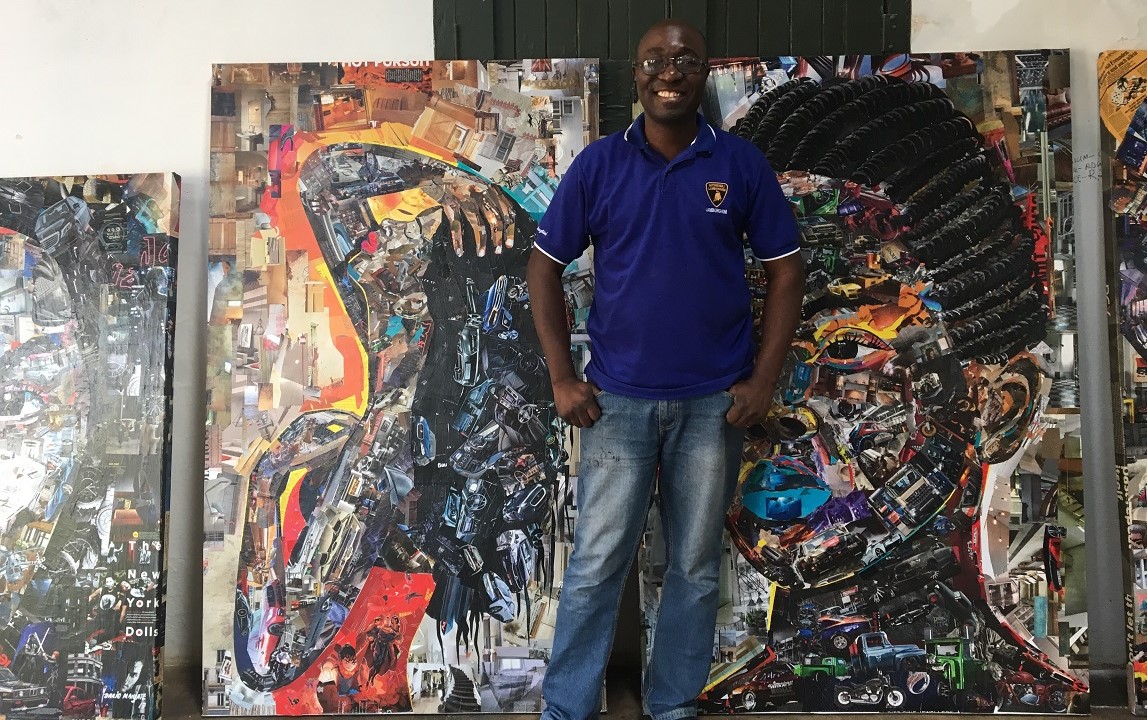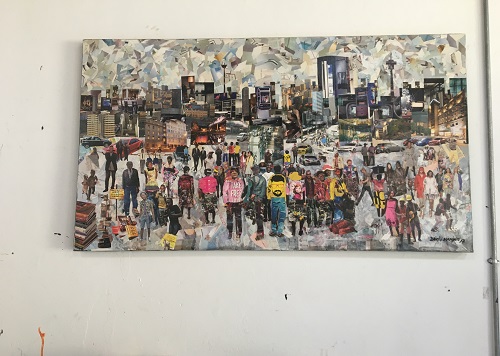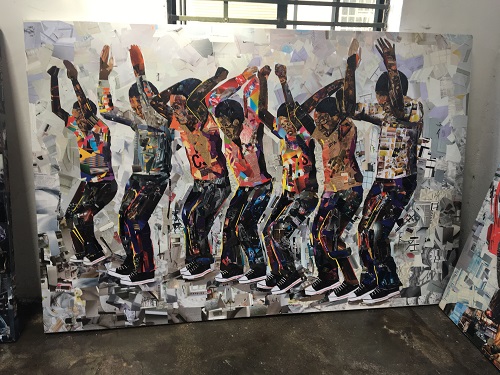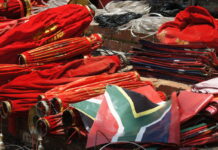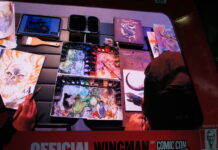Dario Manjate is a Mozambican collage artist who came to South Africa in 1994 and now operates a studio out of the Victoria Yards complex in Lorentzville, just east of the Johannesburg CBD. A former abandoned factory, it is now a “cultural village.” Manjate uses old magazines to create collage portraits and Johannesburg cityscapes. The Daily Vox team visited Manjate at his studio to find out more about his art.
He moved to Johannesburg to live with his grandfather in the Alexandra Township and it was here where he received training in the arts.
“It was not formal training. It was a centre called Thusong Youth Centre that was created for kids to go after school and get lessons about art and drama and music. It was a place where you wouldn’t feel like being in the street. You would go to the centre because you would feel accommodated. I was well-received at the centre by a gentleman called Steven Mavuso. He was the one who introduced me to the art world.”
Manjate says he moved to South Africa because his parents had gotten arrested for political reasons in Mozambique. His father had been accused of being a spy.
Manjate credits his grandmother for his upbringing.
“When my father was arrested, the same month my mother died. My grandmother had to move from the rural areas to come and take care of us. I will literally say that I was raised by my grandmama. I learnt a lot from her.”
Manjate had a show in 2011 which was titled “Dream of an African Woman”, which was inspired by the women in his life.
“Most of my portraits are about women, explaining what women sometimes are going through in their daily lives. My mother did teach me one thing – you can leave a man with seven children, he is going to have a total headache. But leave one woman with seven children – she will manage to take care of all of them whether young or grown. I learnt something from that. I was like you know it’s true what she was saying. If my dad was here, he wouldn’t be able to take care of us because we are just going to hold his head, like what am I going to do now? But my grandmamma, imagine she was old in her 80s, she managed to take care of us. Not physically but emotionally, she would tell us everything was going to be alright.”
Most of the portraits that line the walls of Manjate’s studio portray women in different moods and lights, showing that women do indeed play a great role in his work.
“There is an African idiom that says a child belongs to the village. So I lost my mother but I had a lot of mamas. I felt the loss of my mother but the other mothers played a good role in my life. Being raised by my grandmother, I learnt a lot from her. She created a great impact on me and she shaped me. So it’s a man raised by his grandmama. So this is what gives me more a vision to portray women. Men usually hide emotions but women don’t. Women are straightforward. This is why I prefer to work with women in my portraits.”
Not only does Manjate’s work have a strong women influence, he also says he has a very environmentally friendly influence in what he does.
“It started in 2009. There was a Green movement and there was a movement that we need to recycle. I participated in one of the groups Work to Win in Alexandra. We were cleaning the Jukskei River every weekend after school on Saturday. From there I learnt a lot about having a clean environment in our society. I know you can recycle papers and make other papers. But there are people who get magazines and just throw them away.”
Manjate instead takes the old magazines and reuses them in a more useful and constructive way. However, making the colleges is no simple business. Manjate starts off by drawing the image to get the proportions rights. The biggest challenge then lies with cutting the pieces and selecting the right pieces so that it makes a picture. The more complex a picture also determines how long the picture will take.
One of the more striking images in the studio is an image of Johannesburg city with the people of the city thronging the streets. Manjate says he wants to move towards doing more of those.
“I want to do a lot of cityscapes because we tend to not focus on what is going on around the society. So I want to actually do scenarios of Johannesburg because I live in Johannesburg. When I wake up, I see Joburg. When I go to bed, I just see Joburg.”
However, being an artist is not an easy thing and Manjate says what is especially difficult it getting inspiration and tapping into the market. People also question the longevity and durability of paper. However, he has researched how to ensure his art has a long life and that it doesn’t lose colour.
Manjate has created many artworks but his favourite at the moment has to be the one of the group of boys who are dancing. It was inspired by the township he grew up in.
“People in the township or in the rural areas dance in order to appease their minds. There is no guitar there, there is no drum, they just sing and dance. They release their stresses and emotions. It’s like I’m stepping on my problems when I’m dancing. It’s something psychological. For them it’s something deeper than performance, it is spiritually healing.”
Manjate says he was primarily drawn to collage art because he didn’t have the money for oil paints and other more expensive equipment. With collage art, the only money he has to spend is one glue and sealer. As for magazines, people always drop off old magazines for him to use. (If you have piles of old magazines lying around, why not go and drop it off for Dario?)
Manjate says it is very important for people to do art and had the following advice for aspiring artists:
“Stay focused. Discover your true talent. Stick to it. Keep drawing. Even if you say this drawing is boring, do it. Keep doing it. If your aspiration is to be a lawyer, doctor or journalist, I tell young children keep drawing, in your spare time, draw even if it’s not to make money. Just draw for the sake of drawing. Because if you don’t do that no one else will do it. Don’t worry about perfection. Even perfection itself is not perfect.”
He said he was surprised to find out that Mam’ Winnie Madikizela-Mandela was an artist and this made him realise that even if you’re not an artist, that shouldn’t stop you from doing art.
The interview ended with these parting words from Manjate: “Artists are needed in society. We just draw things but we are needed in society.”
If you would like to see more of Dario Manjate’s art, you can him at Victoria Yards or through his website.

